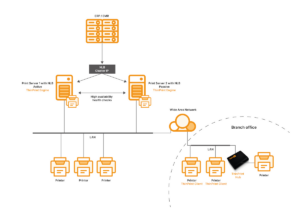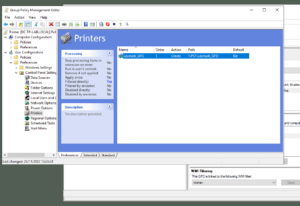How We Created Hundreds of Print Queues in Minutes
With ThinPrint Management Services you can very quickly create hundreds of printer objects and queues on a central print server. So quick, that the entire process takes just a matter of minutes, as we casually demonstrated a while back in the video below. This blog gives a quick run through of how it can be done.

What Is ThinPrint Management Services and Why Is It So Useful for IT Admins?
For error-free configuration of printer objects on the print server, we recommend trying the PowerShell-based Management Services.
Here are some of the benefits of ThinPrint Management Services (TPMS):
- With this single portal you can do away with various different printer specific tools you might normally need to use
- Manual processes can be automated to help minimize configuration errors and create highly efficient print management for any Windows environment
- ThinPrint Management Services also helps you keep an overview of printers, which is particularly useful if you have them distributed over different branch offices.
One of the reasons why ThinPrint has developed its PowerShell-based Management Services is because it is much more flexible than setups that are solely Microsoft-dependent. PowerShell scripts with TPMS allow you to create printer objects, ports and all properties simultaneously for multiple target machines. Even the most complex printer environments can be updated in minutes instead of days. There are already numerous sample scripts available on our website that are easy to edit and customize.
Our TPMS Demo Environment Created 600+ Print Queues in a Matter of Minutes
With the goal of creating hundreds of printer queues across two different print servers, we created a test environment using ThinPrint ports and a native Lexmark driver, with printer queues targeting our embedded Lexmark ThinPrint client directly. You can familiarize yourself with a typical ThinPrint-based setup in more detail.
The generation of over 600 printer queues was then achieved in minutes. Here are the steps that were involved:
- Set up a few initial TPMS-connections by specifying the Service URL and Log Level (documentation).
- Installed the Tpms.Agent on the central print server.
- Created a .csv file listing all the printers with the printer information, driver information and template information and used our Windows Powershell cmdlets to create a script.
- Called the Powershell script that references the csv.file and queries the contents, using a single Lexmark printer template created manually on print server.
By running the script, all the print queues were created automatically and displayed in Windows Print Management, as demonstrated in the video.
ThinPrint Management Services
With the ThinPrint solution, you can not only benefit from more speed due to the ability to run automated or parallel processes, but also
- Automated print driver management
- Instant set up or migration of print servers
- Delegated administration thanks to multi-user capability
To learn more about the strengths of ThinPrint Management Services, take a look at the ThinPrint Management Services feature webpage.




